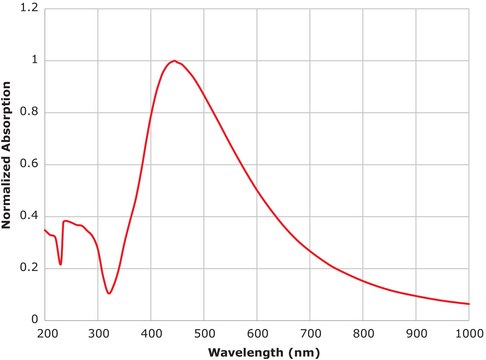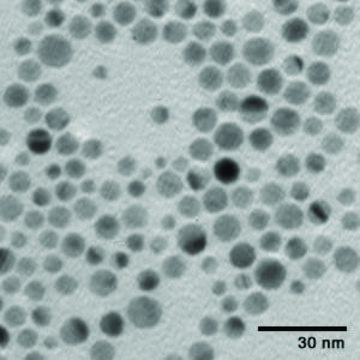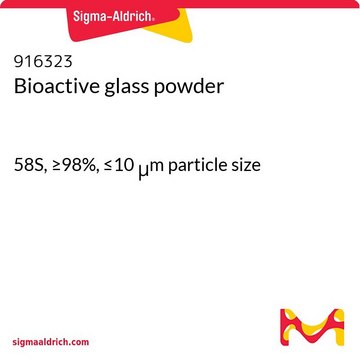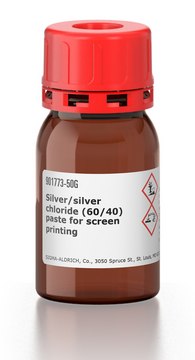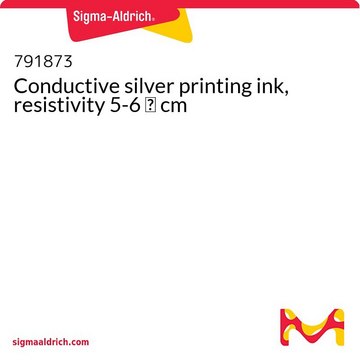推荐产品
应用
Bioactive glass is able to form a hydroxyapatite-like surface layer thus providing a stable bond to bone cells. In addition, bioactive glass has been shown to stimulate bone cells regeneration. Due to its biocompatability and osteogenic capacity applications include tissue engineering, enamel reconstruction, bio-coatings, and high temperature adhesives. Furthermore, S53P4 has displayed antimicrobial activity.
警示用语:
Danger
危险声明
危险分类
Eye Dam. 1 - Skin Corr. 1B - STOT RE 2 Inhalation - STOT SE 3
靶器官
Lungs, Respiratory system
储存分类代码
8A - Combustible corrosive hazardous materials
WGK
WGK 3
法规信息
新产品
Lorenzo Drago et al.
Materials (Basel, Switzerland), 11(2) (2018-03-03)
Bone defects caused by trauma or pathological events are major clinical and socioeconomic burdens. Thus, the efforts of regenerative medicine have been focused on the development of non-biodegradable materials resembling bone features. Consequently, the use of bioactive glass as a
Julian R Jones
Acta biomaterialia, 9(1), 4457-4486 (2012-08-28)
Bioactive glasses are reported to be able to stimulate more bone regeneration than other bioactive ceramics but they lag behind other bioactive ceramics in terms of commercial success. Bioactive glass has not yet reached its potential but research activity is
Francesco Baino et al.
Journal of functional biomaterials, 9(1) (2018-03-23)
Bioactive glasses caused a revolution in healthcare and paved the way for modern biomaterial-driven regenerative medicine. The first 45S5 glass composition, invented by Larry Hench fifty years ago, was able to bond to living bone and to stimulate osteogenesis through
我们的科学家团队拥有各种研究领域经验,包括生命科学、材料科学、化学合成、色谱、分析及许多其他领域.
联系技术服务部门